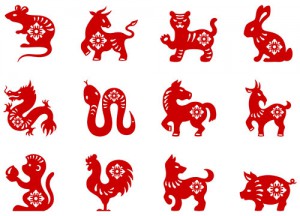 VMFA is ringing in the New Year with a cross-cultural celebration in honor of the Forbidden City exhibition. The 10th annual ChinaFest! Year of the Wood Sheep Family Event on Saturday, January 3, will feature nine treasure-making art activities as well as multiple performances and demonstrations.
VMFA is ringing in the New Year with a cross-cultural celebration in honor of the Forbidden City exhibition. The 10th annual ChinaFest! Year of the Wood Sheep Family Event on Saturday, January 3, will feature nine treasure-making art activities as well as multiple performances and demonstrations.
Here are some things that we learned while planning this event:
- The number nine is an auspicious number associated with the Emperor and Chinese dragons. Dragons are a symbol of the Emperor and are thought to be a direct link between the heavens and earth. Dragons are made up of nine different animals: the horns of a deer, head of a camel, eyes of the devil, neck of a snake, abdomen of a large cockle, scales of a carp, claws of an eagle, paws of a tiger, and ears of an ox. In Forbidden City, visitors will see a large wall made up of nine dragons called the nine-dragon screen.
ChinaFest: Participate in a LEGO® reproduction of this nine-dragon screen.
- Scrolls were used in China to display and transport painting, calligraphy, and poetry. In art and writing, natural elements such as landscapes, animals, and trees represented aspects of life and people. For example, the way that a pine tree grows upright and then bends shows how people can be humble while still reaching for the sky.
ChinaFest: Create your own scroll featuring carp fish and watch calligraphy demonstrations performed by William and Mary Confucius Institute visiting teachers.
- The pipa lute is the main instrument in traditional Chinese music and was introduced into China through the Kucha Kingdom from India about 2,000 years ago. Shaped like a half pear, the pipa is made of wood and has a neck, four strings, and a panel with phases and frets to determine notes. The term pipa consists of two Chinese characters “pi,” which means plucking forward, and “pa,” which means plucking backward. Holding it upright, the player presses the strings with his or her left hand while plucking the strings with the right hand.
ChinaFest: Enjoy pipa performances by William and Mary Confucius Institute visiting teacher, Xiaojing Zou.
- As part of a fund-raising project, the VMFA used 3-D printers to create a scale model of the Forbidden City. The buildings are made from plastic filament, which when fed through a heating unit melts the filament into a very fine line that “draws” the image by extruding it onto the printer bed. The melted plastic quickly cools and solidifies. The printer heads work on a horizontal plane, and as each layer is completed, the bed drops a millimeter with the next layer printed on top of the previous layer, much like a real building. The process can be very time-consuming; even a small building can take two hours to complete.
Construct your own temple or tea house using methods similar to 3-D printing.
At this event, you’ll discover many unique aspects of Chinese culture, but we encourage you to also seek out the similarities. It is these common threads that bond us together and strengthen our world culture.